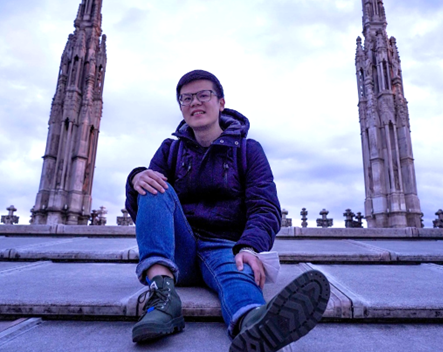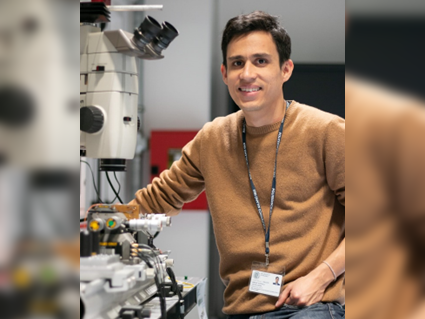“How marbles in a marble run can take different paths”

Climate change, pandemics, shortage of resources – nowadays the news are often dominated by global crises and besides political and socio-economic solutions, science is often perceived as a part of the possible solution to those problems. Having this greater context in mind is always a thrilling motivation to pursue a scientific career to me. I am an early stage researcher of the PERSEPHONe network, and what we are doing within the project - in my case in particular in the Institute of Materials Science of Seville - is just the initial stage of something that could possibly provide an improved technological offer.
My colleagues and me are currently trying to understand dynamics of electric charges within a novel material structure called perovskite. This material has recently shown great potential for many kinds of optoelectronic devices such as solar cells, light emitting devices (e. g. LEDs), detectors or sensors. This understanding will be relevant for the realization of future technologies that can help to reduce the emission of greenhouse gases.
In the crystalline perovskite material, electric charges in form of electrons and electron holes can be liberated from atoms of the crystalline structure and carry electronic charges within the material system. Such free charge carriers can for instance be created in light matter interactions such as the incident of a light particle (photon) into the material. Upon a photon absorption, the created charge carriers will undergo a series of subsequent propagation and recombination processes that determine the overall properties of the material relevant for optoelectronic applications. These processes can have very different timescales and we are in particular interested in the ultrafast processes - meaning what is happing in timescales of a trillionsth of a second. During the lifetime of those charge carriers, they can undergo a multitude of different processes: propagate, interact with the crystalline structure, pass part of their energy to vibrations of this crystalline structure, interact with other charge carriers or get trapped at impurity sites to just name a few of the possible processes. In a simplistic view, each of these possible events can be described with a given probability that will determine the next subsequent process to happen to the charge carrier. Understanding the ultrafast charge carrier recombination in perovskites is thus like understanding of how marbles in a marble run can take different paths to decay from the highest point (excited state) to the lowest point (ground state).
Although this general picture sounds rather simple, identifying and disentangling those processes is a complicated task, which requires a lot of expertise, teamwork and often special equipment. In order to be successful in this quest, a good team and the right advices at the right time are of great importance. The PERSEPHONe network allows to interact with specialist in the field across the globe and exchange ideas. In my case, I was already able to collaborate with different research groups in Spain, Germany and the US. I truly feel that this experience of investigating, learning and growing in such an environment is in the spirit of open, interconnected and publicly funded research, where small parts contribute to something larger. It is definitely an experience that I would never like to miss.
Trying to understand the underlying dynamics is a fascinating puzzle that has occupied me in the past years and will hopefully remain an important part of my life in the future.




